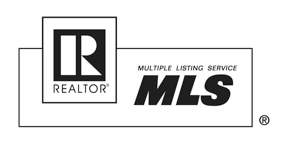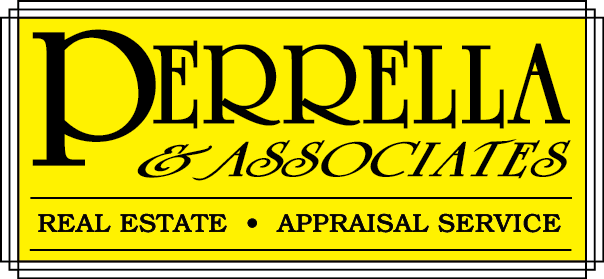Pre-Listing Inspections Put Sellers in Control
In the typical real estate transaction, the buyer is the one to order a home inspection. But sellers, too, can request a professional assessment of their home before putting it on the market. A pre-listing inspection provides sellers with upfront information about the condition of their property, which gives them more control over repairs and potentially strengthens their negotiating position.
Few sellers take advantage of this opportunity, according to Steve Wadlington, president of national home inspection services company WIN Home Inspection. “I don’t expect pre-listing inspections to become mainstream in my lifetime,” he says. Lack of awareness contributes to the underutilization, Wadlington adds, but he also acknowledges that sellers may be reluctant to spend the money for such services.
Additionally, sellers and their agents have a legal duty to disclose to buyers any property issues that are revealed in a pre-inspection report. REALTOR® Magazine spoke with Wadlington about how pre-listing inspections can boost home sales and help sellers defend their asking price.
Are there any differences between a pre-listing inspection and a buyer’s inspection?
The only differences are the customer for whom the inspection is being conducted—in this case it’s the seller, not the buyer—and the point when the inspection occurs. The scope of the inspection is the same. A pre-listing inspection focuses on proper functionality of all major systems and components of the house: heating and cooling; electrical; plumbing; roof and structure; siding; and doors and windows. It’s a full inspection for the seller to better understand the condition of their home prior to the buyer’s inspection. This gives the seller important information to consider so they’re not caught off-guard in the midst of a transaction.
How much does a typical pre-listing inspection cost?
The fee is usually the same as a buyer’s inspection, generally ranging from $350 to $500 for a qualified inspector who carries E&O insurance. Of course, the price varies based on location, square footage, age of the home, and any special conditions, such as whether the home is built on a steep incline.
Why should a seller do an inspection, particularly if the buyer is going to do one anyway?
The value to the seller is that a pre-listing inspection makes them aware of issues in advance of negotiating a purchase agreement, allowing them the chance to resolve the issues or have them accounted for upfront in the asking price. This gives the seller better control in marketing their home and helps minimize stress from heat-of-the-moment negotiations once a purchase agreement is tendered. Homes that have a pre-listing inspection generally sell faster and have fewer inspection-related issues to negotiate, enabling a smoother transaction.
What should a seller do if a pre-listing inspection uncovers significant problems in the home?
It’s always better for everyone to know about major inspection issues as soon as possible. Once they’re identified, they can be carefully assessed for proper resolution. Depending on the nature of the issue, a seller shouldn’t automatically assume that everything needs to be fixed before putting the home on the market. Their real estate professional should advise whether the repairs are necessary to the viability of the sale. Regardless of who owns the property, issues of concern to the buyer will need to be dealt with somehow, and the associated cost of the resolution is a consideration for both the buyer and seller.
If the seller doesn’t want to pay for repairs, what solace does a pre-listing inspection give to the buyer?
For many buyers, being provided forthcoming inspection information has both tangible and emotional value. They’re made aware of issues identified in the inspection report, which gives them more facts to work with, and then they’re provided subsequent clarity on which issues have been or will be resolved as part of the transaction. Sellers who proactively disclose pre-listing issues give buyers proper awareness to factor them into their offers.
Can pre-listing inspections help real estate professionals when marketing a home?
The more information agents can provide to give buyers peace of mind, the better it is for the sale. A pre-listing inspection can also reinforce the seller’s asking price. It enables agents to explain how the inspection report—plus any repairs that were made before listing—helped the sellers arrive at the home’s value. At WIN, we also provide a “Ready for Purchase” sign rider to identify the house as one that has pre-listing inspection information available. It’s similar to what the auto industry has done with marketing certified used cars.
What about sellers who don’t see the sense in paying for an inspection?
Actually, a pre-listing inspection can ultimately save money for sellers in two ways. First, by being aware of and disclosing known property issues upfront, the seller can make it known that consideration for those items has already been factored into the sales price. That effectively takes these issues off the negotiation table. Second, the seller can choose to repair the issues prior to listing, which gives them more control over repair costs.
Should a seller offer the entire pre-listing inspection report to a buyer or just a summary? How much detail is necessary?
I think this is a situational consideration, where sellers should consult with their real estate professional. The industry has evolved such that it is reasonable to view the inspection summary as containing all of the important need-to-know items found in the full report. Since the real goal here is to ensure transparency and awareness, the summary should be adequate to achieve that. Depending on the length and complexity of the full report, as well as the technical complexity of the issues presented in the summary, I can see where a good faith effort to offer more detail could actually cause undue alarm if the buyer can’t put the information in proper perspective. But bear in mind that much of the longer report will also confirm positive functionality of the major systems and components of the home, so it can offer added positive value as well.
Wouldn’t buyers still want to do their own inspection?
Yes, absolutely. If a seller claims to have resolved issues that were uncovered in a pre-listing inspection, the buyer will want a subsequent inspection to confirm those repairs. Whether the buyer uses the same inspector that the seller used is a matter of personal preference, and there are pros and cons either way. Using the same inspector can be beneficial because their prior experience and familiarity with the home allows them to better detect changes based on a point in time. But a properly trained and certified home inspector will inspect the home for the seller or the buyer in the same manner. This person’s view of the home is objective and won’t change based on who hired them.
Steve Wadlington, president of WIN Home Inspection, explains how sellers can avoid potential conflict with buyers and gain an edge in negotiations.
January 2018 | By Graham Wood


